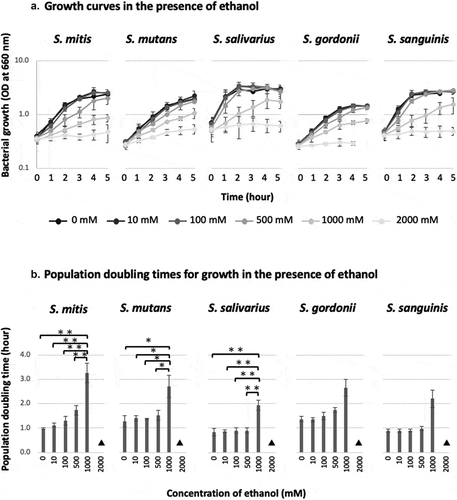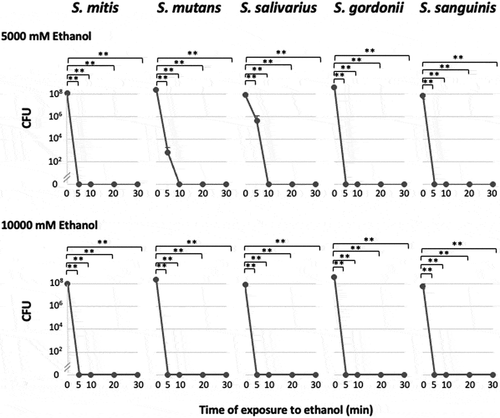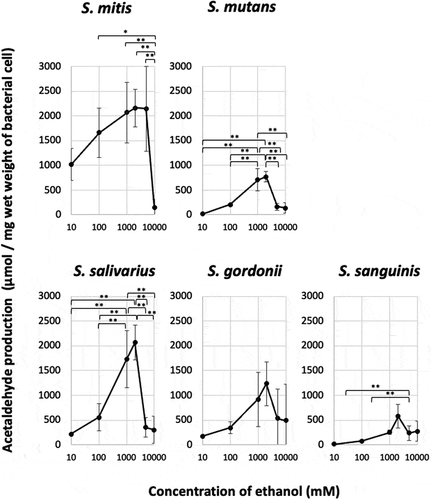Figures & data
Figure 1. Population doubling times and growth curves of oral Streptococcus species in the presence of ethanol

Figure 2. Bacterial viability (CFU) after exposure to 5,000 or 10,000 mM of ethanol

Figure 3. Acetaldehyde production from ethanol by oral Streptococcus species

Table 1. Maximum acetaldehyde production (Vmax) and the concentration of ethanol at which the production was half of the maximum acetaldehyde production (C1/2)
Figure 4. Bifacial biological effects of ethanol

